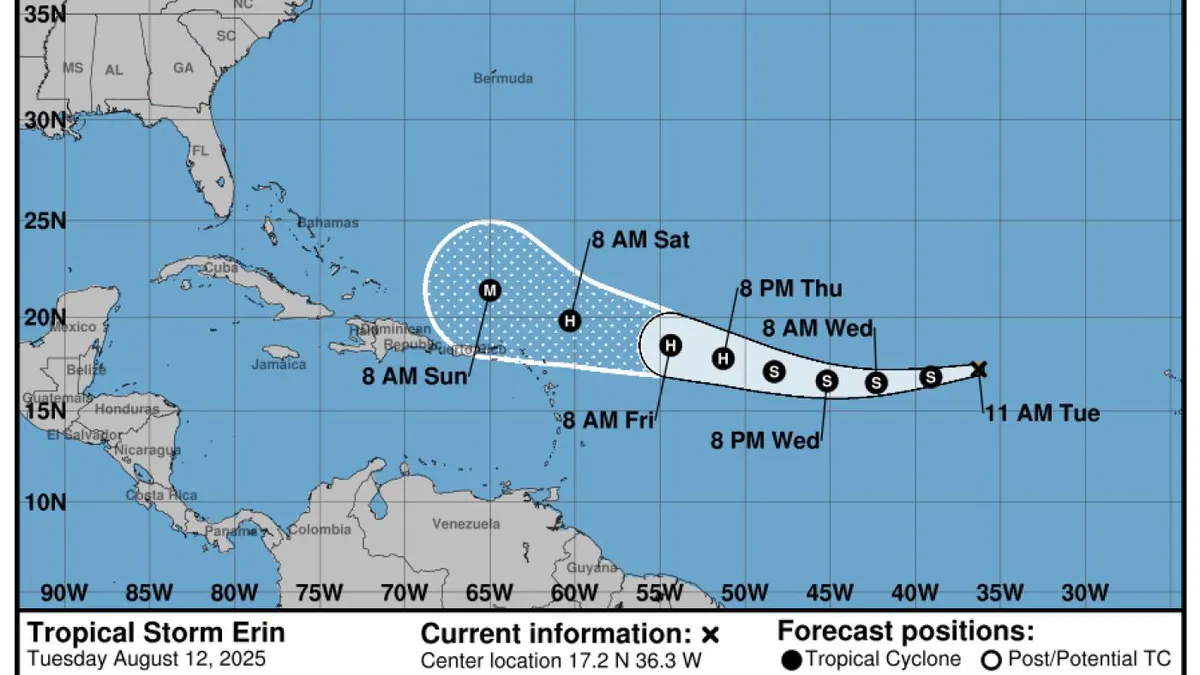
A tropical storm is currently swirling in the Atlantic Ocean, approximately 820 miles west of Cape Verde, and is poised to become the first Atlantic hurricane of the 2025 season. Federal forecasters are closely monitoring Tropical Storm Erin, which is expected to strengthen in the coming days. Predictions indicate that Erin could reach hurricane status by late Thursday.
In a related development, severe storms have already wreaked havoc on the Cape Verde island of Sao Vicente, resulting in the tragic loss of at least eight lives. This information was reported by Reuters on Tuesday. Cape Verde's President, Jose Maria Pereira Neves, addressed the nation via a Facebook post on Monday, revealing that heavy rains have not only caused fatalities but have also led to significant property damage on the island.
The National Hurricane Center (NHC) has indicated that Tropical Storm Erin will traverse warm ocean waters, which will likely enhance its strength as it swiftly moves westward toward the Caribbean. As the storm progresses, it is expected to gradually slow down and make a west-northwest turn.
Currently, Tropical Storm Erin has maximum sustained winds of 45 miles per hour, with tropical storm-force winds extending outward from its center for as much as 35 miles. The NHC has raised concerns about the increasing likelihood of Erin moving closer to Puerto Rico, the Virgin Islands, and the northern Leeward Islands. However, forecasters caution that it is still too early to determine the exact impacts.
In addition to the Caribbean, Tropical Storm Erin may also affect regions along the east coast of the United States, including Bermuda, the Bahamas, and the Greater Antilles, as it continues its trajectory next week. The National Oceanic and Atmospheric Administration (NOAA) had previously predicted an above-average Atlantic hurricane season this year, estimating between 13 and 19 named storms from June 1 to November 30.
NOAA experts have identified several contributing factors that make it easier for tropical storms to develop in 2025, including warmer ocean temperatures and weaker wind shear. As the hurricane season progresses, residents in vulnerable areas should remain vigilant and keep abreast of forecasts from the National Hurricane Center.